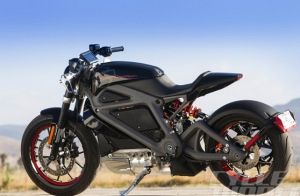I was a two-stroke guy until everything went four-stroke in the 1980s. I had a choice: I could either learn about four-strokes or go stand in a corner and pout. I figured both two-strokes and four-strokes burn the same fuel, mixed with the same air, and perform the same four essential power-cycle functions of compression, combustion, exhaust, and intake, so they are really the same engine, packaged in two different ways. So I got over the change and learned about cam-lobe center angle and airflow through ports with poppet valves in them. I learned lots of interesting stuff.
Now we are feeling the tickle of another big change, as governments and futurists tell us that electric vehicles can and must solve important social, health, and other problems, and must gradually replace today’s fleet of internal-combustion-powered motorcycles, cars, and trucks.
Some people I meet are preparing comfortable corners in which they plan to stand and pout—no electric appliance cars for them! Others, like myself, are trying to learn more about this notional electric revolution, so I have tapped out this umpteen-part series on what I’ve learned so far.
Necessary Realism
Electric vehicle advocates proudly tell us their machines emit zero pollution. That is true only at the point ofuse, as 88 percent of our electricity still comes from sources that emit plenty of pollutants into the environment. If the energy in all the liquid fuel burned annually by this nation’s vehicles is to be replaced by electricity, decisions will have to be made as to how that will be generated.
Sources of Electric Power
Electrical machines are highly efficient, but the processes by which the electricity that powers them comes into being are less so.










24
Comment